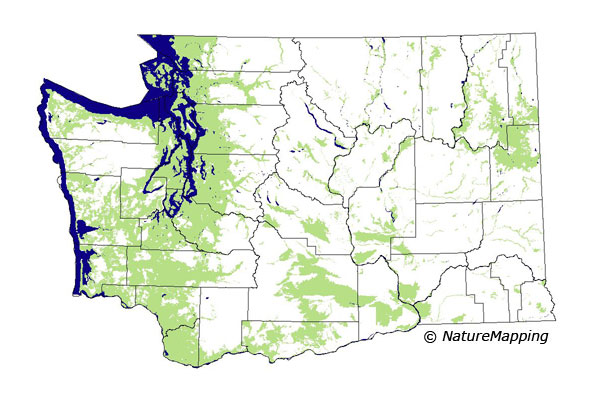


Downy Woodpecker (Picoides pubescens) Description: Downy Woodpeckers are our smallest and most commonly seen woodpeckers. They like to go into backyards and are not afraid to visit feeders, especially when peanut butter is offered. They look almost identical with the Hairy Woodpecker. So one must look at size of the bird and bill to tell the difference.
Size: 7 inches, about the size of medium size bird from the pet store. The wingspan reaches 12 inches, which is the size of any regular ruler. The bill is sliver-like and short. It's only half as long as its head. The Hairy Woodpecker's bill is at least as long as its head, and thicker than the small sliver-like bill of the Downy Woodpecker, this is a good way to not confuse yourself with the Hairy Woodpecker. Color: It has black and white feathers. Their stomach, chest, and back are white. Their tails and wings are black. Their back wings have rows of white spots, and when sitting still the wings cover most of the Downy's back leaving a narrow strip of white between the shoulder blades, right below the head. Adult males have a red patch on the back of their head, while females have white stripes on either side of their head that often join together resembling a hallow with a black center. The red patch on the adult male interrupts this white hallow, however males still have the black patch on top of their head as well. (photo of a male is on the left; female is on the right)
Listen to calls of this species » Range / Habitat: The most common American woodpecker, the Downy Woodpecker is found throughout most of North America from Alaska to Florida. It lives in a variety of habitats from wilderness forests to urban backyards, and comes readily to bird feeders. This species is common in hardwood and mixed forest, residential areas with hardwood trees, and hardwood-dominated riparian areas at low and moderate elevations above the Columbia Basin. Click the range map to learn more about the distribution of Downy Woodpeckers in Washington. Feeding: Males and females search for food in different areas. Males prefer smaller branches and like the higher upper areas of trees, while females look for food in the middle of the tree or lower. They like to eat insects, especially wood boring larvae. The Downy Woodpecker is great help to our ecosystems because they feed off of destructive insects. They are also known .to eat some fruit, seeds and sap. Life Cycle: It takes less than 1 year for a Downy Woodpecker to be ready to have babies. In the spring and early summer is mating season. They have a breeding territory of 24 acres per 1 pair. Each egg takes 12 days to hatch and they stay with their parents for about a month. Each nest usually has 4-5 eggs. Did you know?
Animal silhouettes available to purchase » Photos: Natures Pics
|